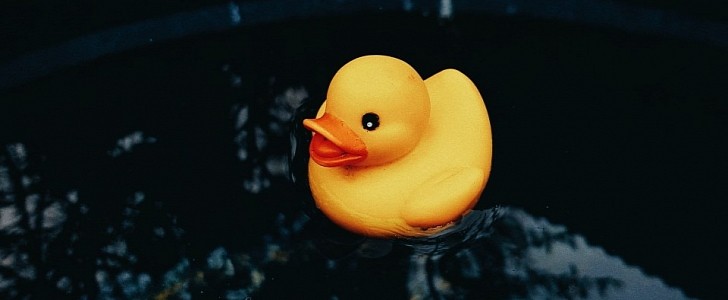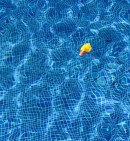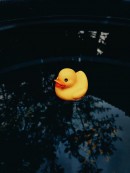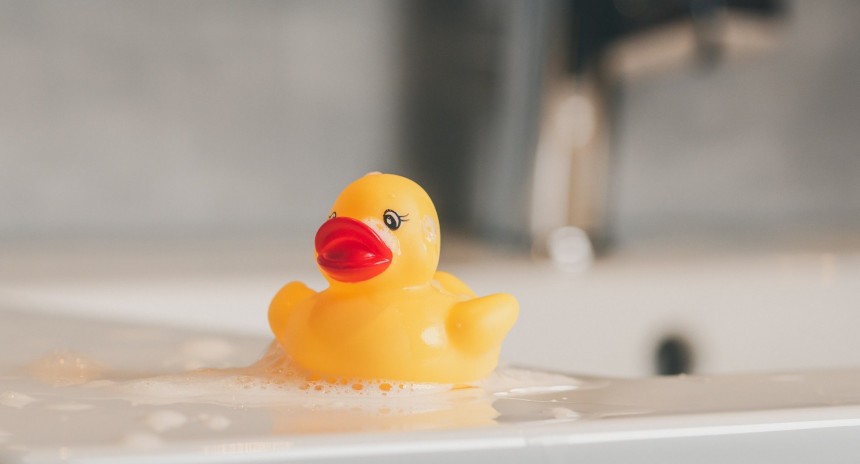Three decades ago, an unfortunate incident led to an unexpected study into global ocean currents using rubber ducks. That study revealed just how connected our seas are, led to the creation of a new term, and demonstrated what happens when things are discarded in the Ocean. Please don't do the latter.
It all started on January 10, 1992, with a powerful storm in the Pacific Ocean. As you may have seen in dramatized variants in motion pictures, storms are not something to mess with while at sea. It does not matter how big the ship you are on is, things can get messy.
In the case of a freight vessel that was traveling from Asia to North America, things were not going a-Ok, as the ship was tipped dangerously and repeatedly. Somehow, Evergreen's (yes, that Evergreen) Ever Laurel did not sink because of the repeated tipping, but it lost a dozen 40-foot (12-meter) containers. Yes, those that some people build minimalist houses out of these days.
According to the shipping manifest, one of the intermodal containers that were lost at sea that day had 28,800 rubber bath toys, which came in four forms.
They were packaged in plastic, and each box had a green frog, a red beaver, a blue turtle, and a yellow duck. The story does sound better with 28,000 rubber ducks, but reality does not always sound as good as fiction, does it?
All those children's toys were meant to reach the Tacoma port in Washington, along with numerous others. Somehow, the container that had the toys, which are called "Friendly Floatee," and were sold by The First Years company, became open, and the packages were free to roam the world's largest bathtub.
Those rubber toys managed to be free of their cardboard housing and backing cards because the former was not meant to withstand seawater, and the toys were sealed, which ensured optimal buoyancy.
Fortunately, someone saw something positive in the outcome of this incident. Oceanographers Curtis Ebbesmeyer and James Ingraham began to track the progress of those rubber ducks, and they were assisted by beachcombers across the world.
Back then, the Internet was something that few people had access to, so contacting people was more difficult and expensive when compared to today's emails and DMs.
It took ten months for the first batch of toys to be discovered, and their journey took them to Sitka, Alaska. Only ten toys were found there, so 28,790 were still roaming the world's oceans. Hundreds of other toys were found on the 530-mile-long (850 km) shoreline.
They used a computer model called OSCUR, which was supposed to help fisheries, but is an Ocean Surface Currents Simulation based on measurements of air pressure since 1967.
Ingraham, the designer of that computer model, managed to predict future movements of the remaining "ducks," as well as discover the likely locations of those lost at sea.
The two oceanographers also coined the "flotsametrics" term for the toys, and with it, items that are discarded in the ocean are described as flotsam ever since.
The “migration” of the rubber ducks led to the creation of at least two children's books, at least one scientific book, called Moby-Duck, an animated TV movie, as well as a song.
Now, scientists do not require people to let them know that they found plastic ducks from 1992 on a beach, as advanced buoys are used to track oceanic moves. If you want to see what would happen if trash is dropped into the ocean, there is an interactive map for that.
The pollution of the Globe's oceans and seas is something that is difficult to gauge, but it is happening. Even if we all converted our vehicles to zero-emission technology overnight, that would not fix what is wrong with the world's oceans.
The least every person could do is to ensure that they never drop things in the ocean, and that they never leave trash behind when they enjoy nature.
In the case of a freight vessel that was traveling from Asia to North America, things were not going a-Ok, as the ship was tipped dangerously and repeatedly. Somehow, Evergreen's (yes, that Evergreen) Ever Laurel did not sink because of the repeated tipping, but it lost a dozen 40-foot (12-meter) containers. Yes, those that some people build minimalist houses out of these days.
According to the shipping manifest, one of the intermodal containers that were lost at sea that day had 28,800 rubber bath toys, which came in four forms.
They were packaged in plastic, and each box had a green frog, a red beaver, a blue turtle, and a yellow duck. The story does sound better with 28,000 rubber ducks, but reality does not always sound as good as fiction, does it?
All those children's toys were meant to reach the Tacoma port in Washington, along with numerous others. Somehow, the container that had the toys, which are called "Friendly Floatee," and were sold by The First Years company, became open, and the packages were free to roam the world's largest bathtub.
Those rubber toys managed to be free of their cardboard housing and backing cards because the former was not meant to withstand seawater, and the toys were sealed, which ensured optimal buoyancy.
Fortunately, someone saw something positive in the outcome of this incident. Oceanographers Curtis Ebbesmeyer and James Ingraham began to track the progress of those rubber ducks, and they were assisted by beachcombers across the world.
It took ten months for the first batch of toys to be discovered, and their journey took them to Sitka, Alaska. Only ten toys were found there, so 28,790 were still roaming the world's oceans. Hundreds of other toys were found on the 530-mile-long (850 km) shoreline.
They used a computer model called OSCUR, which was supposed to help fisheries, but is an Ocean Surface Currents Simulation based on measurements of air pressure since 1967.
Ingraham, the designer of that computer model, managed to predict future movements of the remaining "ducks," as well as discover the likely locations of those lost at sea.
The two oceanographers also coined the "flotsametrics" term for the toys, and with it, items that are discarded in the ocean are described as flotsam ever since.
The “migration” of the rubber ducks led to the creation of at least two children's books, at least one scientific book, called Moby-Duck, an animated TV movie, as well as a song.
Now, scientists do not require people to let them know that they found plastic ducks from 1992 on a beach, as advanced buoys are used to track oceanic moves. If you want to see what would happen if trash is dropped into the ocean, there is an interactive map for that.
The pollution of the Globe's oceans and seas is something that is difficult to gauge, but it is happening. Even if we all converted our vehicles to zero-emission technology overnight, that would not fix what is wrong with the world's oceans.
The least every person could do is to ensure that they never drop things in the ocean, and that they never leave trash behind when they enjoy nature.










